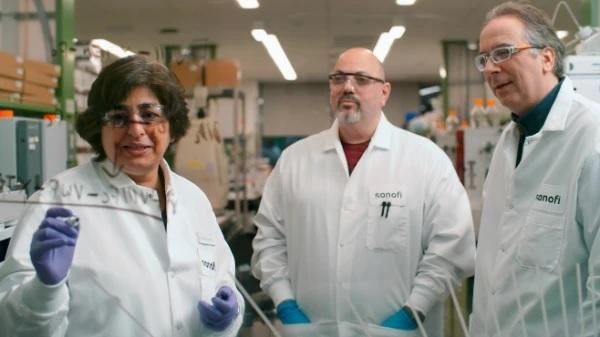From Aspirations to Reality: My Journey as a Woman Scientist to Redefine Hemophilia Care

By Ekta Seth Chhabra, Senior Clinical Research Director, Rare Disease
I’ve always liked science, but never thought that I wanted to pursue it as a career. Growing up in India, and into high school, I had never met, or even seen, any women scientists. It wasn’t until 12th grade that my perspective changed. I saw a few interviews of two local female scientists– and it was inspiring. Through their stories, I realized that science was a field I wanted to explore, specifically biochemistry, and that maybe one day I could research and develop a therapy that would positively impact patients – and carry the baton of scientific research.
The image of female scientists fueled my passion and work through college, grad school and during my PhD studies. During this time, I also experienced a serious accident that required a year-long recovery. In R&D, there is the term “to bring medicines from the bench (in the lab) to the bedside (patients)” and during my recovery, I learned more about the patient side of things. This coupled with my passion for science further drove my motivation to pioneer new treatment approaches that could have a significant positive benefit not just on the patient who could take the medicine, but their family members and friends – I dared to dream as large as a medicine having an impact on society, making strides toward equity.
Eventually, I moved out of academia and into the life sciences industry because my hope was to have my research be able to truly impact the lives of patients. I saw a job opening, but it was focused on hemophilia, a rare blood disorder. At that time, I knew there were approved treatments for hemophilia, but I figured there were lingering unmet needs if this company wanted to research this rare condition further. I never thought I’d work in hemophilia because it’s such an old disease.
After working for a few months, I was fortunate enough to attend a large conference held by the National Hemophilia Foundation, one of the leading patient advocacy groups in the rare blood disorder community. For the first time, I had an opportunity to interact with the hemophilia community, particularly the children in attendance with their families. As a parent myself, seeing the impact of hemophilia on the kids left a major impression on me and I realized just how much room there was for improvement when it came to therapies. After that conference I knew this was the field for me, that I wanted to work toward developing a treatment that could directly impact their lives and their families. This is when I realized that “this project found me”.
The project itself was a 13-year journey. We started with a bold concept based on research. After creating the construct, we encountered some challenges and put our first approach on hold. We pushed forward and spent roughly two years looking for other molecules. Then we made the decision to go back and once again look at what we had originally created. And it turned out, our first approach was on the right track because we tested and saw the results we had been searching for. We had a hunch, but those two years helped us significantly in better understanding and improving the final molecule.

My colleagues and I spent the next few years refining before moving from research to development. Usually in research, you’d hand the project over to development and wouldn’t see it further. But I was very fortunate – I was able to advance my career and become a part of the development team, moving along with the program. Over the years, the investigational therapy was tested across various animal species and in several clinical trials from Phase 1 through Phase 3 --- all with positive efficacy and safety results.
I’ve been blessed to work with so many amazing people and teams throughout the journey, all contributing to the success of this therapy. They say it takes a village to raise a child. Well, to create a treatment, it takes multiple villages. I’m so thankful to my colleagues across research, clinical development, regulatory, medical affairs, technical development, supply chain and manufacturing. Literally hundreds of people working day and night to make sure that each aspect of the treatment/molecule is what we need it to be. All of us on the same page working to bring this important treatment from research to market—from bench to bedside. It’s truly been a life-changing experience.
It is a very interesting time in the field of hemophilia treatment. I cannot express how grateful I am to be able to carry the baton in scientific research and pass it forward. With this therapy now available in the U.S., we’re helping to evolve expectations of hemophilia care and, most importantly, providing hope to people living with hemophilia and their families, with a treatment that is less burdensome. I’m excited to see just how much further science can take us.